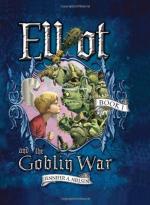|
This section contains 326 words (approx. 2 pages at 300 words per page) |

|
As a novel that addresses the period between 1945 and 1991, Underworld echoes the work of Thomas Pynchon, Kurt Vonnegut, Jr., Joseph Heller, Robert Coover, and E. L. Doctorow. Though Pynchon's Gravity's Rainbow, Vonnegut's Slaughterhouse Five (1968) and Heller's Catch-22 (1961) are all set during the Second World War, each addresses post-War cultural paranoia. They are all concerned with "[t]he secret history that never appears in the written accounts of the time or in the public statements of the men in power," as Lenny Bruce says in Underworld. As World War II novels written through the lens of the Cold War, they address paranoid belief systems and depict America as being morally complicit in the very things it purports to condemn: Vonnegut implies that the Allied fire-bombing of Dresden was also a war crime; Pynchon makes much of the fact that German rocket scientists work for the American government...
|
This section contains 326 words (approx. 2 pages at 300 words per page) |

|




